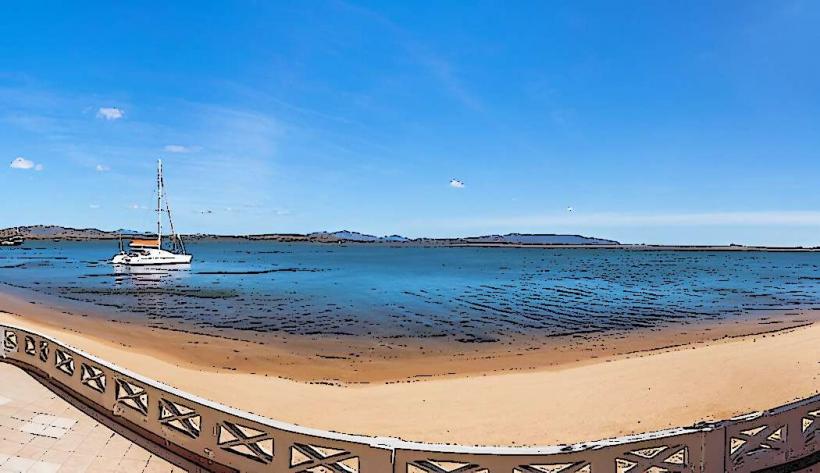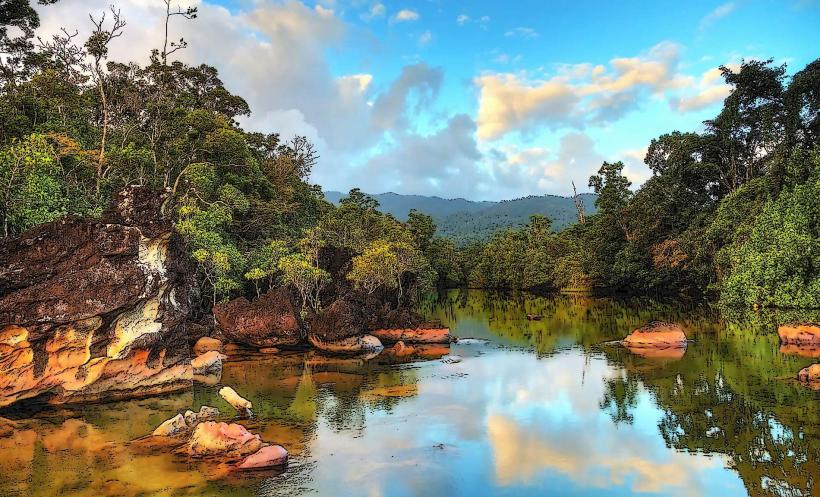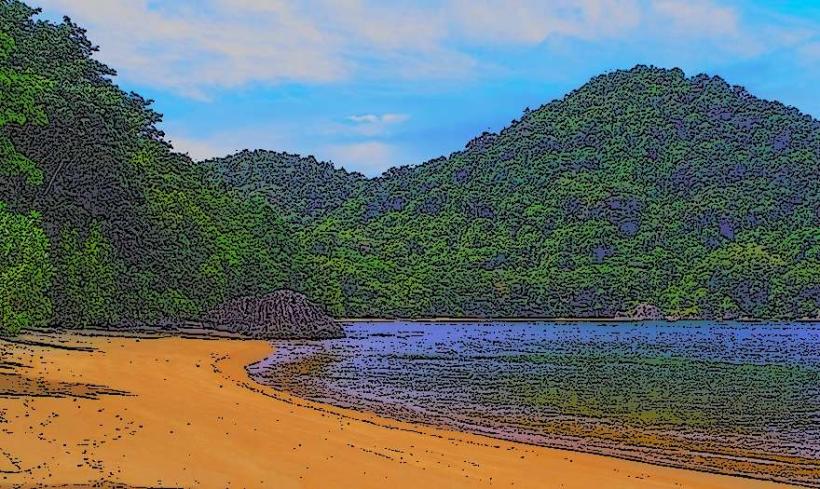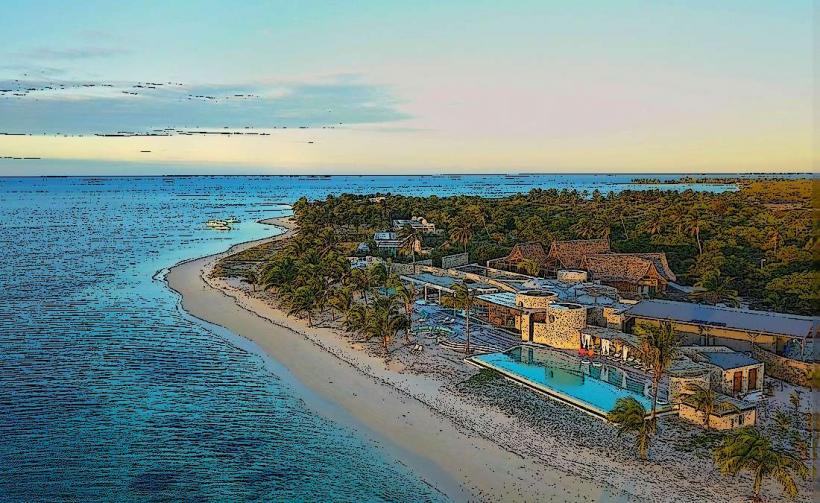Information
Landmark: Vohémar ForestCity: Vohemar
Country: Madagascar
Continent: Africa
Vohémar Forest is a significant natural area located in the Sava Region of northeastern Madagascar, near the town of Vohémar. This forest is part of the broader ecosystem of the Masoala Peninsula and plays an important role in the conservation of Madagascar’s unique biodiversity. Here’s a detailed look at the Vohémar Forest:
1. Geography and Location:
Vohémar Forest is situated near the town of Vohémar, which is located on the northeastern coast of Madagascar, in the Sava Region. The forest is part of a larger tropical rainforest ecosystem that stretches across the Masoala Peninsula and extends into protected areas like Masoala National Park and Nosy Mangabe Reserve. The forest is characterized by its dense vegetation, with a variety of tree species and a rich understory of plants and shrubs. The area is accessible by road or boat from Maroantsetra, but like much of the northern Madagascar region, it remains relatively remote and pristine.
2. Ecological Significance:
Vohémar Forest is an important part of Madagascar’s unique ecosystem, with rich biodiversity both in its terrestrial and marine environments. This region is crucial for conservation because of its endemic species and its role in maintaining ecological balance in the surrounding areas. Key ecological features include:
- Tropical Rainforest: Vohémar Forest is part of Madagascar's tropical rainforest biome, which is home to a variety of plant species, including many that are endemic to the island. The forest provides vital ecosystem services such as carbon sequestration, water filtration, and soil stabilization.
- Endemic Flora and Fauna: The forest supports a variety of endemic species, many of which are found only in Madagascar. The region is home to several rare and endangered species that rely on the forest for habitat.
3. Wildlife:
Vohémar Forest is home to a number of species that are endemic to Madagascar, some of which are critically endangered. These species include:
- Lemurs: Several species of lemurs inhabit the Vohémar Forest, including the black-and-white ruffed lemur (Varecia variegata), which is critically endangered and found only in the rainforests of northeastern Madagascar. The common brown lemur and other small lemur species are also present in the area.
- Frogs: The forest is a hotspot for endemic frogs, many of which are brightly colored and highly specialized to their environment. Species such as the blue-legged leaf frog (Aglyptodactylus madagascariensis) are found in the forest.
- Reptiles and Amphibians: Vohémar Forest is also home to a variety of chameleons, geckos, and other reptiles, many of which are endemic to Madagascar. These include the Madagascar tree boa and numerous species of chameleons.
- Birds: Birdwatching is another popular activity in Vohémar Forest. The forest is home to several endemic bird species, including the Madagascar crested ibis and the Madagascar pochard, both of which are highly sought after by bird enthusiasts.
- Insects: As with most tropical rainforests, Vohémar Forest is rich in insect species, including butterflies, moths, and beetles, many of which are unique to Madagascar.
4. Conservation Importance:
Vohémar Forest plays a critical role in the conservation of Madagascar's biodiversity. This area is part of the larger network of protected areas in northeastern Madagascar, which includes Masoala National Park and Nosy Mangabe Reserve. Some key conservation features include:
- Habitat Protection: Vohémar Forest is an essential habitat for many of Madagascar’s endemic species. Deforestation and habitat loss are major threats to wildlife, and the forest helps to protect species from these threats.
- Research and Scientific Studies: The forest offers a valuable opportunity for scientific research, particularly in the fields of biodiversity, ecology, and conservation. Researchers visit Vohémar to study the species that inhabit the region, as well as the forest's unique ecosystem.
- Sustainable Eco-Tourism: The forest is also a potential area for eco-tourism, which promotes conservation while providing economic opportunities for local communities. Sustainable tourism helps raise awareness about the importance of preserving such critical habitats.
5. Tourism and Activities:
Vohémar Forest offers eco-tourism opportunities for those interested in exploring Madagascar’s natural beauty and biodiversity. Although less visited than some other areas of the island, it remains a fascinating destination for nature enthusiasts. Key activities include:
- Wildlife Watching: The primary activity in the Vohémar Forest is wildlife observation, particularly for those interested in spotting rare and endemic species such as lemurs, frogs, and chameleons.
- Birdwatching: The forest is a great destination for birdwatching, with opportunities to see unique bird species that are endemic to the region. A guided tour with an expert can help visitors spot hard-to-find birds like the Madagascar crested ibis.
- Hiking and Trekking: Visitors can hike through the forest’s dense trails, exploring the rainforest’s flora and fauna. Some trails lead to viewpoints offering panoramic views of the surrounding area.
- Cultural Experiences: Visitors can also engage with local Malagasy communities, learning about the culture, traditions, and sustainable practices that help preserve the forest.
6. Challenges and Threats:
Vohémar Forest, like many of Madagascar’s rainforests, faces several conservation challenges:
- Deforestation and Habitat Loss: Logging, agricultural expansion, and illegal land conversion pose significant threats to the forest’s biodiversity. While the forest is protected, illegal activities continue to threaten its long-term viability.
- Climate Change: Madagascar’s unique ecosystems are vulnerable to the effects of climate change, such as increased temperatures, altered rainfall patterns, and extreme weather events, all of which can disrupt the forest’s delicate balance.
- Invasive Species: The introduction of non-native species to the region can also threaten the local flora and fauna, as invasive species often outcompete or prey upon native species.
7. Best Time to Visit:
The best time to visit Vohémar Forest is during the dry season, from April to November, when rainfall is less frequent, making hiking and wildlife viewing more enjoyable. The wet season (December to March) brings heavy rainfall, which can make trails slippery and harder to navigate, though the forest is lush and vibrant during this time.
Conclusion:
Vohémar Forest is an essential part of Madagascar’s northeastern ecosystem and a key area for conservation. The forest is home to a rich diversity of endemic species and serves as a critical habitat for wildlife such as lemurs, frogs, and birds. While it faces significant conservation challenges, it remains a vital natural resource for both biodiversity and eco-tourism. For visitors, Vohémar Forest offers a chance to experience Madagascar’s unique flora and fauna in one of the island’s most pristine and ecologically important environments.






